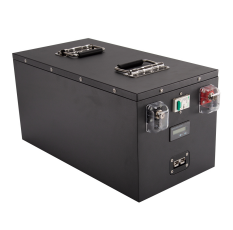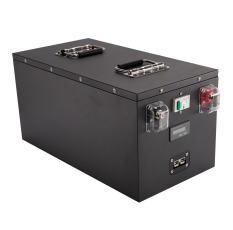Power tool industry
Electric tools are widely used in engineering construction, decoration, metal processing, wood processing and other fields of the national economy. They can greatly reduce labor intensity and improve people's work efficiency. They are an important part of the equipment manufacturing industry and an important factor that directly determines the performance, level, quality and reliability of major equipment. It is also one of the key factors in realizing the transformation of my country's equipment manufacturing industry from large to strong.
1. Overview of the electric tool industry
Electric tools are mechanized tools that use DC or AC motors as power and drive the working head through a transmission mechanism. There are many classification standards for electric tools. According to the power supply and power connection methods, they can be divided into corded (AC) electric tools and cordless (mainly lithium-ion) electric tools; according to different application fields, the "Electric Tool Model Compilation Method (GB/T9088-2008)" issued by the China National Standardization Administration divides electric tools into metal cutting, sanding, assembly, construction and road, forestry, agriculture and animal husbandry, gardening, mining and other categories. The power tool industry has many product categories and rich application fields, including advanced equipment manufacturing, road construction, decoration, woodworking/metal processing, shipbuilding and other industrial or home scenes such as decoration.
From the application scenario, according to the different product performance and application fields, the power tool products can be divided into three categories: industrial, special and general. The characteristics of different types and representative brands in the industry are as follows:
1.1 Development History of the Global Power Tool Industry
Power tools were first born in Europe in the late nineteenth century. In 1895, CE&Fein of Germany combined conventional manual drills with electric motors to produce the world's first power tool, which weighed about 16.5 pounds and required multiple operators to work at the same time to make it work properly. In 1910, Black&Decker improved the original tools and created a new power tool with more powerful functions and easier operation, symbolizing the birth of the first generation of power tool products. In the following hundred years, the categories of power tool products have been continuously enriched. Currently, there are hundreds of product types, and the application scenarios are constantly expanding. With the development of energy technologies such as lithium batteries, cordless power tools have gradually emerged and gradually occupied a dominant position in the fields of professional tools and general tools.
The development history of power tools is briefly introduced as follows:
1.2 Development history of my country's power tool industry
Since the birth of the first power tool in my country in 1942, my country's power tool industry has gone through three stages of development.
The first stage was from 1942 to 1979, when the development of my country's power tool industry was still in the early stage of imitation. In 1942, Dawei Motor Factory imitated the American "Champagne" brand electric drill to manufacture 6 mm and 13 mm electric drills, creating a precedent for China's production of power tools, marking the official birth of my country's power tool manufacturing industry. Due to the gap in technical level, China's power tool industry is still in its infancy, with scarce product types, and the market is basically monopolized by international brands such as BOSCH, MAKITA, and DEWALT.
The second stage was from 1980 to 2010, when my country's power tool manufacturers gradually accumulated production experience through OEM production, and improved technology precipitation and channel construction. During this stage, due to the low labor cost and relatively complete manufacturing industry foundation in the Chinese market at that time, well-known power tool manufacturers such as Bosch, Makita, Stanley Black & Decker entered China and opened multiple production bases in China. Through the accumulation of production experience in OEM and other OEM production models, my country's power tool manufacturers have gradually improved and matured in technology, production capacity and sales channels, and the Chinese power tool market has the soil for diversified development.
The third stage is since 2011, when my country's power tool development has entered a new era. During this stage, the scale of the domestic power tool market has grown rapidly, and my country has become the world's major power tool production base. At the same time, my country's power tool industry has become increasingly mature, and competition within the industry has become increasingly fierce. In terms of products and technologies, technological innovations such as lithium batteries, motors, and controllers, as well as my country's advanced infrastructure construction and development in AI, 5G, and big data have promoted the enrichment of product categories and design improvements, and my country's power tools have made strides in the field of cordless and intelligent development.
Looking ahead, industry integration will accelerate and the survival of the fittest in the market will intensify. Some domestic power tool suppliers with certain market influence are expected to firmly grasp the initiative in future competition.
2. Current status of the power tool industry
2.1 The global power tool market is generally saturated, and cordless power tools are the main growth point
In recent years, the scale of the global power tool market has grown steadily. According to the report of the Prospective Industry Research Institute, the scale of the global power tool market will reach US$35.89 billion in 2023, and the compound growth rate from 2018 to 2023 will be only 1.03%. Among them, in the second half of 2021, affected by factors such as temporary international transportation difficulties and supply chain fluctuations, downstream customers of power tools have increased their stocking orders, leading to a short-term rise in the power tool market in 2021, up 16.01% from 2020; in 2022, affected by unfavorable factors such as the Russian-Ukrainian conflict, the European energy crisis, and international inflation, the demand for power tools has declined significantly. In the future, as the inventory is gradually digested, the impact of the Russian-Ukrainian conflict becomes normalized, and international energy prices tend to stabilize, the power tool market as a whole will gradually resume its growth trend. According to the forecast data of the Forward Industry Research Institute report, the global power tool market size will grow to US$44.91 billion by 2028, with a compound growth rate of 4.59% from 2023 to 2028.
The global power tool market size from 2018 to 2023 is as follows:
According to the power supply technology, power tools can be divided into corded and cordless types. Considering factors such as energy supply efficiency and use cost, cordless power tools are currently mainly lithium-ion power tools. With the continuous upgrading of lithium-ion batteries and motors, in the field of medium and low-intensity applications, the restrictions on energy supply of cordless power tools with lithium-ion as the main power supply method gradually disappear, and their advantages such as flexibility and portability, long use radius, and rich application scenarios are highlighted, so they are increasingly favored by consumers. From 2018 to 2023, the compound growth rate of the cordless power tool market is as high as 4.72%. According to the forecast of the Prospective Industry Research Institute, the market size of cordless power tools will reach 32.33 billion US dollars in 2028, and its market penetration rate will reach 71.99%. The global market size of corded and cordless tools from 2018 to 2023 is as follows:
According to the application field, power tools can be divided into industrial, professional and general-purpose grades. In different application fields, there are obvious differences in the penetration rate of lithium-ion power tools. Industrial and professional-grade power tools have high requirements for power and endurance, corresponding to large-capacity and high-rate batteries; while general-purpose power tools do not have a long continuous operation time, and the battery capacity and rate are relatively low. Given that general-purpose power tools have lower requirements for lithium battery rate performance, their lithium electrification level is higher than that of industrial and professional-grade power tools. According to the statistics of the Prospective Industry Research Institute, the global lithium battery penetration rate of industrial-grade power tools in 2023 is 50.6%, while that of general-purpose tools is as high as 78.2%. In the future, with the maturity of energy supply technologies such as lithium batteries, the penetration rate of lithium batteries will further increase. The global penetration rate of lithium batteries for electric tools from 2018 to 2023 is as follows:
2.2 The global electric tool market is mainly concentrated in North America and Europe, and the Asia-Pacific region is growing rapidly. From the perspective of the global regional market size, North America and Europe are currently the main consumer markets for electric tools in the world, followed by the Asia-Pacific region. In 2023, the market size of North America, Europe, and Asia-Pacific will account for 34.80%, 34.19%, and 22.62% respectively, while their electric tool consumption will account for 30.12%, 27.72%, and 30.10% respectively.
According to the forecast of the Forward Industry Research Institute, from 2023 to 2028, the compound growth rate of the market size and consumption of electric tools in the Asia-Pacific region will reach 9.18% and 9.42% respectively, with strong growth momentum. By 2028, the consumption of electric tools in the Asia-Pacific region will account for 36.00%, surpassing North America to become the world's largest market for electric tool consumption.
The market size and consumption of electric tools in various regions around the world from 2018 to 2022 are as follows:
2.3 China is the main production base of electric tools in the world
After the reform and opening up, China accelerated the introduction and improvement of various manufacturing industries. The electric tool industry and supporting parts production industry have developed rapidly. At present, China has developed into a major production base of electric tools in the world. According to the data of the Prospective Industry Research Institute, in recent years, the proportion of my country's electric tools in the global electric tool output has remained above 60%, becoming the processing and manufacturing center of global electric tool products. The changes in China's electric tool industry output and global share from 2018 to 2023 are as follows:
3. Overview of sub-industries-electric hammer and electric pick industry
3.1 Introduction to electric hammer and electric pick The electric tool field has a variety of sub-categories, including electric hammers, electric picks, saws, electric drills, electric wrenches, angle grinders, etc. Compared with other electric tools, electric hammers and electric picks have built-in impact structures and are handheld electric tools used for impact operations.
An electric hammer is an electric rotary hammer drill with a safety clutch and a pneumatic hammering structure. It is based on an electric drill, with an additional piston with a crankshaft connecting rod driven by an electric motor. The piston compresses the air in a cylinder back and forth, causing the air pressure in the cylinder to change periodically. The changing air pressure drives the impact hammer in the cylinder to reciprocate and strike the top of the drill bit. The whole process is equivalent to hitting the drill bit with a hammer. The structure of an electric pick is similar to that of an electric hammer. The electric pick drives the swinging weight to move in a bouncing manner, causing the pick head to produce the effect of chiseling the ground. It is a hammer tool that only has an internal impact structure and the axial force is not controlled by the operator for impact operations. According to the "Electric Tool Model Compilation Method (GB/T9088-2008)" issued by the Standardization Administration of the People's Republic of China, electric hammers and electric picks belong to the category of electric tools for construction roads.
3.2 Market Capacity Analysis of Electric Hammer and Electric Pick Industry ❶ The market potential of electric hammer and electric pick industry is relatively large. According to the statistics of Qianzhan Industry Research Institute, the global production of electric hammer and electric pick in 2023 will be 21.37 million units and 7.7 million units, respectively, with market sizes of 10.35 billion yuan and 5.36 billion yuan, respectively. With the continuous advancement of infrastructure construction in emerging economies around the world and the continuous improvement of hammer and pick products in terms of product categories, process technology, etc., the electric hammer and electric pick market will still have a large room for growth in the future. According to the Qianzhan Industry Research Institute, by 2028, the global production of electric hammer and electric pick will reach 32.21 million units and 15.07 million units, respectively, and the market size will reach 16.03 billion yuan and 10.25 billion yuan, respectively, with a large market potential. The global market size of electric hammers and pickaxes from 2018 to 2023 is as follows:
❷China is the world's main production base for hammers and pickaxes
Since 2018, China has been the main production base for electric hammers and pickaxes in the world. According to the statistics of the Prospective Industry Research Institute, China's total production of electric hammers and pickaxes in 2023 will reach 20.03 million units, accounting for 68.90% of the global production of electric hammers and pickaxes; the total output value of electric hammers and pickaxes in 2023 will reach 8.22 billion yuan. The output value of electric hammers and pickaxes in China from 2018 to 2023 is as follows:
❸Electric hammers and pickaxes are limited by application scenarios, and the lithium battery penetration rate is low
The overall lithium battery penetration rate of electric hammers and pickaxes is currently low. At present, domestic lithium batteries and other energy supply methods are still limited in terms of battery capacity and seismic resistance. In industrial and professional application scenarios with high operating intensity and harsh use environment, their role in replacing AC hammers and pickaxes is still relatively limited at this stage.
In 2023, the global penetration rate of lithium batteries for hammers and picks will be about 20.2%, among which the penetration rate of lithium batteries for industrial-grade hammers and picks will be about 9.7%, the penetration rate of lithium batteries for professional-grade hammers and picks will be about 23.7%, and the penetration rate of lithium batteries for general-purpose hammers and picks will be about 30.8%. It is expected that with the maturity of global lithium battery energy supply technology, the global penetration rate of lithium batteries for hammers and picks will further increase. The global penetration rate of lithium batteries for hammers and picks from 2018 to 2023 is as follows:
4. Industry development trend
4.1 The monopoly of well-known foreign brands is broken, and domestic leading manufacturers are going global with their brands. In the early stage of the development of domestic power tools, domestic manufacturers relied on the advantages of a complete supporting industrial chain and significantly lower costs than those in Europe and the United States to quickly access the global power tool production chain through ODM, OEM and other models, and design and OEM for well-known foreign brands. At present, my country has become the main production base of power tools in the world, and the overall technical level of power tool manufacturers has been widely recognized by domestic and foreign customers.
In recent years, some domestic power tool manufacturers have seized the development trend of product globalization, grasped the market opportunity of the rapid development of emerging market countries and the surge in demand for power tools, built their own brand network and exported their brands overseas. After years of precipitation and development, many power tool manufacturers with significant international influence have emerged in my country, such as Suzhou Yingweilai and its affiliated entities, Quanfeng Holdings, and Bosch Group, and the monopoly advantage of foreign companies in the power tool market has gradually weakened.
4.2 Lithium-ion power tools have significant advantages in medium and low-intensity application scenarios, and the cordless replacement of power tools is accelerating
With the rise of energy supply methods such as lithium batteries, cordless power tool products have rapidly sunk to medium and low-intensity application scenarios in multiple scenarios and multiple formats. Cordless power tools have gotten rid of the limitations of the use radius of traditional power tools, and have significant competitive advantages such as light use and low noise compared to traditional AC tools. At present, the main energy supply method for cordless power tools is lithium-ion batteries. Their battery capacity and output power have basically met the use needs of medium and low-intensity application scenarios, so they have developed rapidly in this type of application scenario and replaced traditional AC tools.
In the future, as cordless power supply technologies such as lithium battery packs become more mature, the reduction in battery pack costs and the further increase in output power are expected to promote the penetration of lithium-powered power tools into higher-intensity application scenarios, accelerating the overall process of lithium-powered power tools.
4.3 Consumers' purchasing habits are gradually reshaped, and e-commerce channels are expected to accelerate their rise
At present, the sales channels of the domestic power tool industry are mainly offline distribution. Power tool manufacturers have reached a cooperative relationship with regional distributors through long-term technical level precipitation and market reputation accumulation through two-way selection, and directly sell their products to regional distributors. Regional distributors then sell products to end customers, and finally realize the entire sales process.





